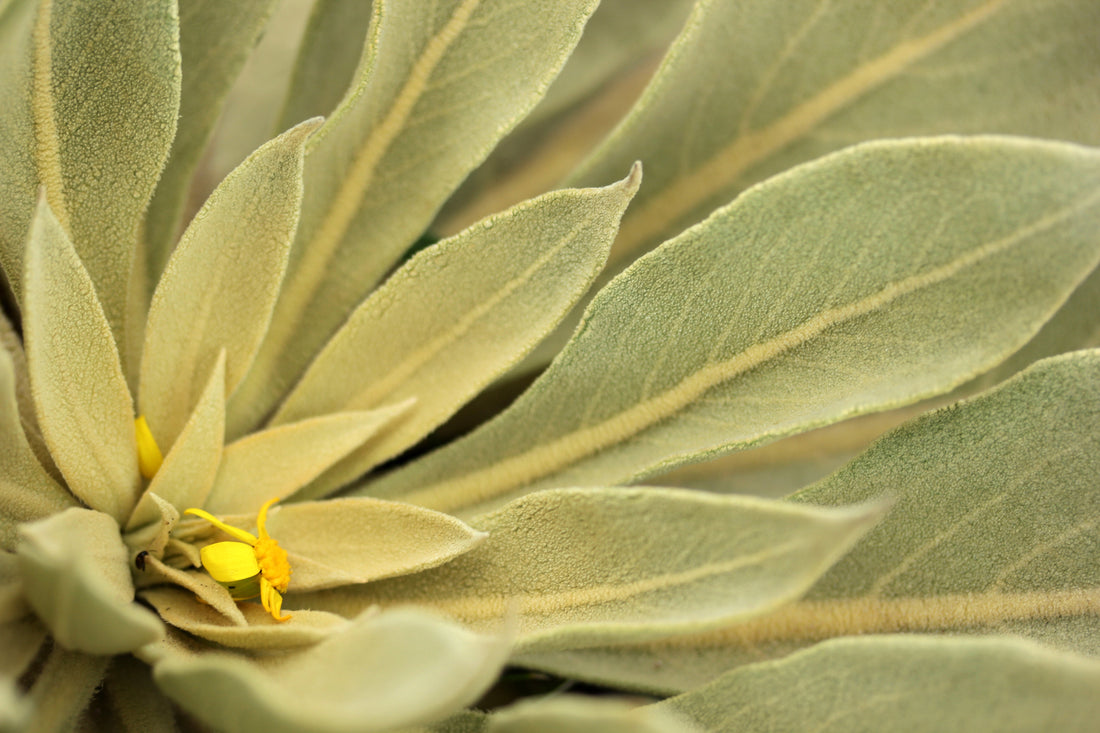
The Many Amazing Benefits of Wild Mullein: A Forager’s Guide
Share
The Many Amazing Benefits of Wild Mullein: A Forager’s Guide
Nestled along sunny roadsides, meadows, and disturbed soils throughout British Columbia, wild mullein (Verbascum thapsus) stands tall with its velvety leaves and towering flower spikes. Often called "poor man's blanket" or "nature’s torch," this hardy biennial plant has been revered for centuries in herbal medicine. As a forager in BC, I’ve come to appreciate mullein not just for its striking appearance but for its incredible healing properties.
Identifying & Harvesting Mullein Safely
Mullein is easy to spot—its first-year rosette features large, fuzzy leaves, while the second-year plant sends up a tall stalk (up to 2 meters!) with bright yellow flowers. When foraging:
- Choose clean locations—avoid roadsides with heavy pollution or pesticide use.
- Harvest leaves in the first year (more tender) or flowers in the second year (best for teas).
- Dry leaves thoroughly before storage to prevent mold—hang them in bundles or use a dehydrator.
Now, let’s dive into the benefits of mullein and the best ways to use it.
The Healing Powers of Mullein
1. Respiratory Relief
Mullein is legendary for lung health. Its leaves and flowers contain saponins and mucilage, which help:
- Soothe coughs and bronchitis
- Loosen mucus (expectorant properties)
- Ease asthma and allergy symptoms
2. Earache Remedy
Mullein ear oil (made from infused flowers) is a traditional remedy for ear infections and pain—especially in children.
3. Anti-Inflammatory & Pain Relief
Applied as a poultice or salve, mullein can help with:
- Joint pain (arthritis)
- Skin irritations (burns, wounds, hemorrhoids)
4. Digestive & Diuretic Support
Mullein tea may aid digestion and act as a mild diuretic, helping with bloating and urinary tract health.
5. Natural Antimicrobial Properties
Studies suggest mullein has antibacterial and antiviral effects, making it useful during cold and flu season.
Best Ways to Use Mullein: Tea, Powder, or Cooked?
1. Mullein Tea (Best for Respiratory & Relaxation)
- How to make it: Steep 1-2 tsp dried leaves or flowers in hot water (not boiling) for 10+ minutes. Strain well to avoid tiny hairs irritating the throat.
- Best for: Coughs, congestion, and nighttime relaxation.
2. Raw Mullein Powder (Versatile & Potent)
- How to use: Grind dried leaves into powder and add to smoothies, capsules, or honey.
- Best for: Quick immune support or incorporating into daily routines.
3. Cooked Mullein (Less Common but Nutrient-Rich)
- Young leaves (before flowering) can be blanched and added to soups or stews—though slightly bitter.
- Best for: Those who prefer incorporating herbs into meals rather than teas.
Bonus: Mullein Infused Oil (For Earaches & Skin)
- Fill a jar with mullein flowers, cover with olive oil, and let sit in the sun for 2-4 weeks. Strain and use for earaches or skin healing.
Final Thoughts: Which Form is Best?
- For respiratory health? Tea or tincture.
- For daily immune support? Powder in smoothies or capsules.
- For topical use? Infused oil or salve.
Mullein is a forager’s treasure—gentle yet powerful, abundant yet often overlooked. Keep an eye out for this fuzzy healer on your next wildcrafting adventure!

